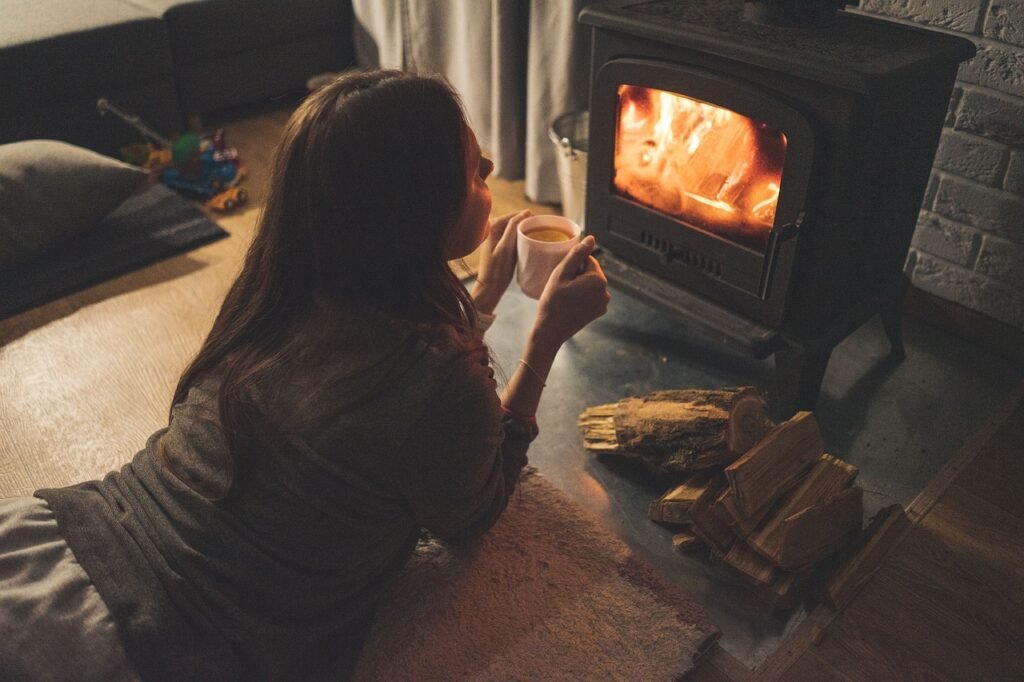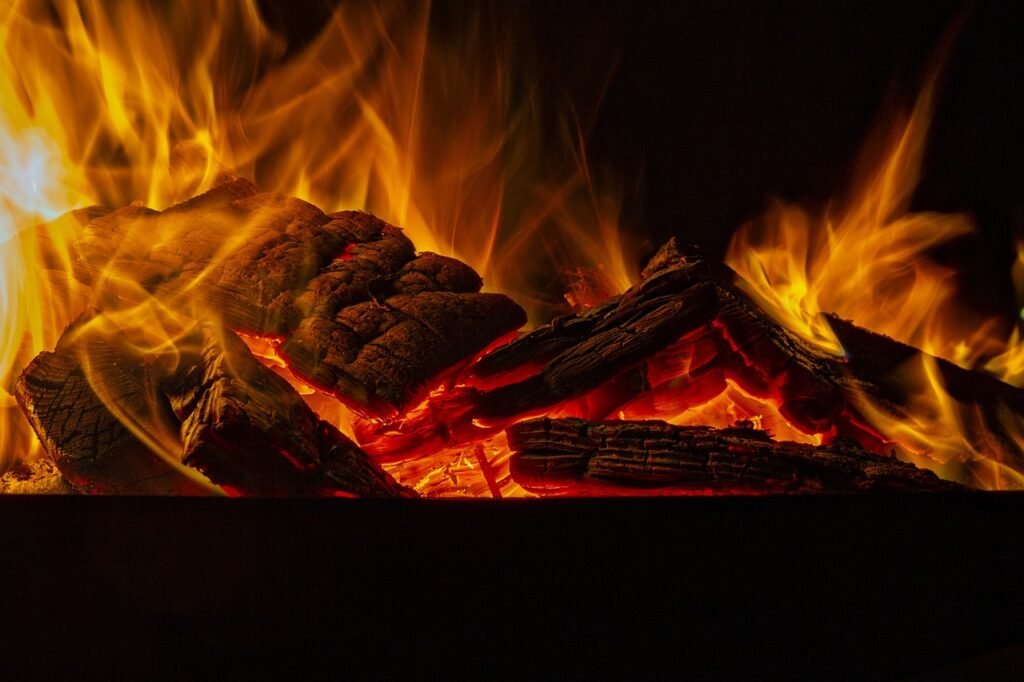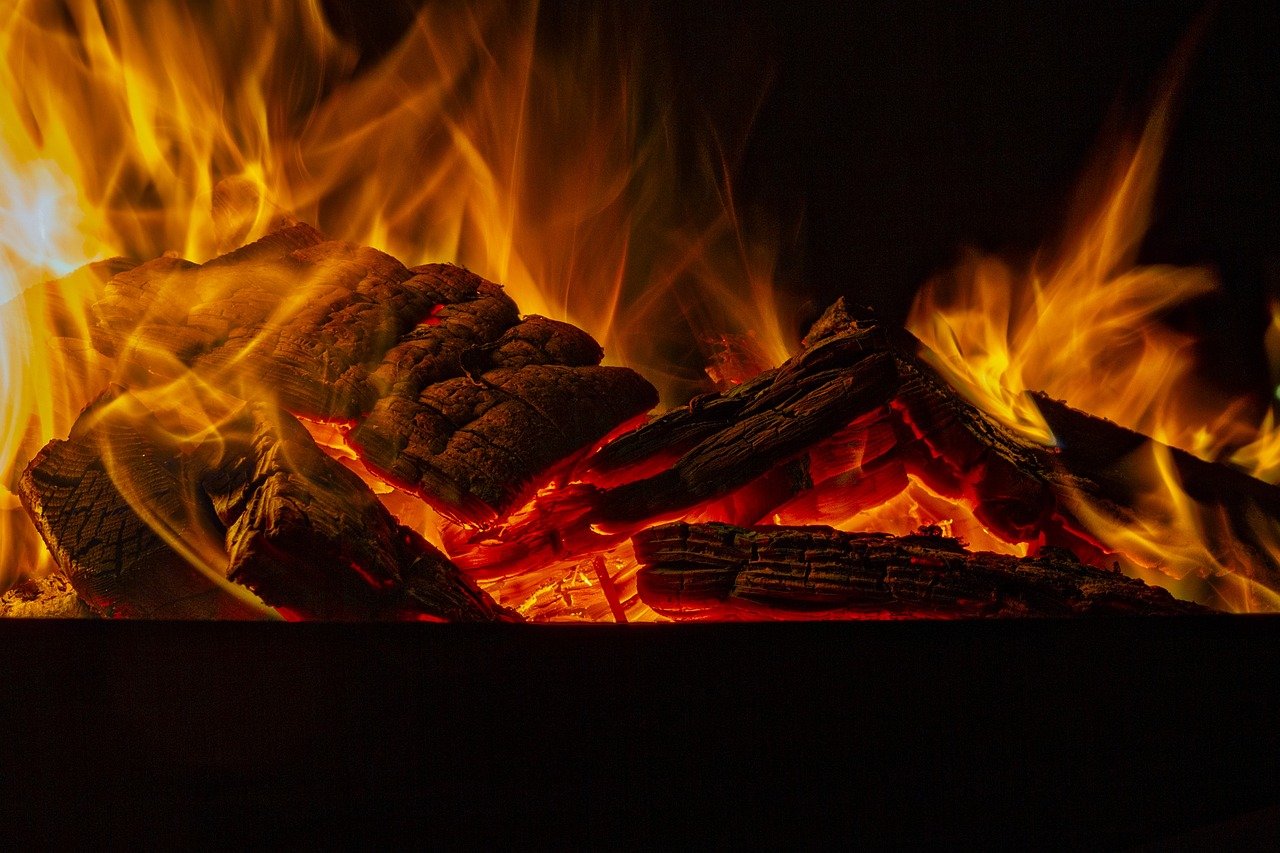Imagine enjoying cozy nights by the fireplace, knowing that you are not only keeping warm but also contributing to a clean and green environment. In this article, we will explore the concept of efficiency and how it can be applied to revamp your fireplace. By making small changes and embracing new technologies, you can transform your fireplace into a more eco-friendly and efficient heating source. Get ready to discover practical tips and innovative solutions that will not only enhance your fireplace experience but also reduce your carbon footprint.
1. Understanding the Need for Efficiency
Importance of efficiency in fireplaces
When it comes to fireplaces, efficiency plays a crucial role in ensuring optimal performance and reducing environmental impact. An efficient fireplace not only helps you stay warm and cozy during the colder months, but it also saves energy and reduces fuel consumption. By maximizing the amount of heat generated from the fuel, efficiency ensures that less energy goes to waste, helping you lower your energy bills and carbon footprint.
Benefits of efficiency for the environment
Efficient fireplaces contribute significantly to creating a cleaner and greener environment. By burning fuel more efficiently, these fireplaces produce fewer emissions and pollutants, minimizing their impact on air quality. This is particularly crucial in areas where wood-burning fireplaces are popular, as inefficient wood combustion can release harmful particulate matter and contribute to respiratory issues. By upgrading to a more efficient fireplace, you can take a step towards reducing air pollution and promoting a healthier living environment.
Impact of inefficient fireplaces on air quality
Inefficient fireplaces can have a detrimental impact on indoor and outdoor air quality. When a fireplace fails to burn fuel efficiently, it produces excessive smoke, particulate matter, and toxic gases. These pollutants can be released both inside your home and into the surrounding environment, contributing to poor air quality and potential health hazards. By revamping your fireplace for efficiency, you can minimize these emissions and create a healthier living space for yourself and those around you.
2. Assessing Your Current Fireplace
Evaluating the efficiency of your existing fireplace
Before deciding to revamp your fireplace, it’s essential to assess the current efficiency of your existing setup. There are several factors to consider, such as how well your fireplace retains heat, the rate of fuel consumption, and the amount of smoke and emissions produced. If your fireplace lacks efficiency, it may be time to explore alternative options.
Determine the fuel type and consumption
Understanding the fuel type and consumption of your fireplace is crucial in evaluating its efficiency. Different fuel types, such as wood, gas, or electricity, have varying levels of efficiency. Wood-burning fireplaces, for example, may be cozy but can be highly inefficient due to the amount of heat lost through the chimney. It’s important to determine how much fuel your fireplace consumes and the associated costs to identify potential areas for improvement.
Identify any potential leaks or inefficiencies
Inefficient fireplaces may have underlying issues, such as leaks or poor insulation, that contribute to their lack of efficiency. Inspect your fireplace for any cracks, gaps, or damaged components that may be causing heat loss or preventing optimal combustion. Identifying these inefficiencies can help you address them during the revamp process, ensuring that your fireplace operates at its best possible efficiency.

This image is property of pixabay.com.
3. Upgrading to Eco-Friendly Fuel Options
Exploring alternative fuel sources
As the focus on environmental sustainability grows, it’s crucial to consider alternative fuel sources for your fireplace. Wood, gas, and electric fireplaces are common options, each with its own set of advantages and disadvantages. Wood-burning fireplaces provide a cozy ambiance but are often less efficient and produce more emissions. Gas fireplaces offer convenience and efficiency, while electric fireplaces provide clean energy and easy installation. Exploring these options can help you make an informed decision based on your specific needs and preferences.
Benefits of using eco-friendly fuels
Utilizing eco-friendly fuels in your fireplace can have several benefits. For instance, gas fireplaces reduce the reliance on traditional wood-burning and minimize emissions while still providing warmth and comfort. Electric fireplaces, on the other hand, require no real combustion, resulting in zero emissions. By choosing eco-friendly fuel options, you not only save energy and lower your carbon footprint, but you also contribute to preserving natural resources and protecting the environment for future generations.
Comparison of wood, gas, and electric fireplaces
It’s essential to compare different fireplace options to determine which one aligns best with your efficiency and environmental goals. Wood-burning fireplaces offer a traditional and rustic atmosphere, but they require a constant supply of wood and can be inefficient in terms of heat output. Gas fireplaces burn cleaner and require less maintenance, making them a popular choice for efficiency-conscious individuals. Electric fireplaces are highly energy-efficient and easy to install, providing a hassle-free and eco-friendly heating solution. Consider the pros and cons of each type to select the one that suits your lifestyle and priorities.
4. Installing a Fireplace Insert
What is a fireplace insert?
A fireplace insert is an excellent option for enhancing the efficiency of your existing fireplace. It is a self-contained unit that fits directly into your existing fireplace opening, transforming it into a more efficient and effective heating source. Fireplace inserts are available in various sizes and styles, allowing you to find one that complements your home decor while significantly improving heat output and fuel efficiency.
Types of fireplace inserts available
There are several types of fireplace inserts to choose from, depending on your specific needs and preferences. Wood-burning inserts are an excellent choice for those who want to retain the charm of a traditional fireplace while increasing efficiency. Gas and electric inserts offer clean-burning and energy-efficient options, providing convenience and ease of use. Pellet inserts utilize renewable fuel and offer a high level of efficiency. Each type of insert has its unique benefits, allowing you to find the perfect fit for your fireplace revamp.
Cost considerations and installation process
Before installing a fireplace insert, it’s important to consider the associated costs and the installation process. The price of a fireplace insert can vary depending on the type, size, and additional features. However, the long-term energy savings and reduced fuel consumption can offset the initial investment. Installation usually involves retrofitting the insert into the existing fireplace opening, ensuring proper ventilation and a secure fit. It’s recommended to consult a professional to ensure a safe and efficient installation.

This image is property of pixabay.com.
5. Incorporating Energy-Efficient Features
Adding a heat exchanger or blower
Enhancing the efficiency of your fireplace can be achieved by incorporating energy-efficient features such as a heat exchanger or blower. A heat exchanger, also known as a fireplace grate heater, helps maximize heat transfer by capturing and circulating the warm air that would otherwise be lost through the chimney. This results in increased warmth and reduced energy waste. Similarly, a blower or fan can be installed to improve airflow and distribute heat more efficiently throughout the room.
Installing a programmable thermostat
Installing a programmable thermostat is another energy-efficient feature that can enhance the performance of your fireplace. This allows you to set specific temperature levels and timing, ensuring that your fireplace operates only when needed. With a programmable thermostat, you can optimize energy usage and prevent unnecessary fuel consumption, resulting in lower energy costs and improved efficiency.
Integrating smart home technology
The integration of smart home technology can further enhance the energy efficiency of your fireplace. By connecting your fireplace to a smart home system, you can remotely control and monitor its operation, ensuring that it operates at optimal efficiency. Smart home technology also provides the convenience of controlling your fireplace from anywhere, allowing you to adjust settings and schedule heating times to maximize energy savings.
6. Enhancing Insulation and Sealing
Checking and improving chimney insulation
Proper chimney insulation is crucial for optimizing the efficiency of your fireplace. Inspect your chimney for any signs of heat escape or improper insulation. Adding insulation or upgrading existing insulation can help prevent heat loss and ensure that the heat produced by your fireplace stays inside your home. This improves the overall efficiency of the fireplace and reduces the amount of energy required to maintain a comfortable indoor temperature.
Sealing gaps and cracks in the fireplace and chimney
Gaps and cracks in the fireplace and chimney can lead to significant heat loss and inefficient combustion. Inspect the fireplace and chimney for any gaps or cracks and seal them using appropriate sealants or insulation materials. By preventing air leaks, you can ensure that your fireplace operates at its highest efficiency, minimizing heat loss and reducing energy waste.
The role of proper insulation in energy efficiency
Proper insulation is a fundamental factor in maximizing the energy efficiency of your fireplace. Insulation helps retain heat within your home by creating a barrier against external temperature changes. This allows your fireplace to operate more efficiently by minimizing heat loss and reducing the need for continuous fuel consumption. By ensuring that your fireplace and chimney are properly insulated, you can create a more comfortable living environment while saving energy and reducing your carbon footprint.

This image is property of pixabay.com.
7. Maintaining and Cleaning Your Fireplace
Regular chimney sweep and inspection
Regular chimney sweep and inspection are essential for maintaining the efficiency and safety of your fireplace. Over time, soot, debris, and creosote can accumulate in the chimney, obstructing airflow and increasing the risk of chimney fires. Schedule regular chimney sweeps to remove these deposits and ensure proper ventilation. Additionally, inspections can identify potential issues or damage that may affect the efficiency of your fireplace, allowing for timely repairs or adjustments.
Cleaning fireplace components
Cleaning the various components of your fireplace is crucial for optimal performance. Remove ashes and debris from the firebox and clean the glass doors or panels to maintain clear visibility and prevent heat loss. Regular cleaning ensures that your fireplace operates efficiently and reduces the risk of fire hazards associated with the buildup of flammable materials.
Preventing creosote buildup and chimney fires
One of the significant concerns with inefficient fireplaces is the buildup of creosote, a highly flammable substance that can accumulate in the chimney lining. Creosote buildup not only reduces efficiency but also significantly increases the risk of chimney fires. To prevent this, burn seasoned wood, avoid smoldering fires, and schedule regular chimney sweeps to remove any creosote deposits. By taking preventive measures, you can ensure the safe and efficient operation of your fireplace.
8. Understanding Fireplace Efficiency Ratings
Understanding the efficiency rating system
To make informed decisions when revamping your fireplace, it’s essential to understand the efficiency rating system for fireplaces. One commonly used rating is the Annual Fuel Utilization Efficiency (AFUE) rating, which measures the amount of fuel that is converted into useful heat. The higher the AFUE rating, the more efficient the fireplace. It’s also important to consider other factors such as emissions ratings and energy-saving features to get a comprehensive understanding of a fireplace’s efficiency.
Comparing different fireplace models and their ratings
When considering a fireplace revamp, compare the efficiency ratings of various models to determine the most efficient option for your needs. Look for fireplaces with high AFUE ratings and low emissions levels. Additionally, consider the size and layout of your space to ensure that the fireplace you choose can effectively heat the area while maintaining energy efficiency. Taking the time to compare ratings and features will help you find a fireplace that meets your efficiency and environmental goals.
Choosing the most efficient option for your needs
Choosing the most efficient fireplace option depends on various factors, including your heating requirements, fuel availability, and environmental considerations. Wood-burning fireplaces, for example, can be more environmentally friendly if you have access to sustainably sourced firewood. Gas fireplaces are often highly efficient and convenient, while electric fireplaces offer energy-efficient heating without combustion. Consider your specific needs and priorities to select the most efficient and suitable option for your home.
9. Considering Environmental Impact
Reducing carbon footprint with efficient fireplaces
By revamping your fireplace for efficiency, you can significantly reduce your carbon footprint. Efficient fireplaces minimize fuel consumption and emissions, helping to combat climate change and reduce environmental impact. When less fuel is burned for heating, fewer greenhouse gas emissions – such as carbon dioxide and methane – are released into the atmosphere. By choosing an efficient fireplace and using eco-friendly fuel options, you contribute to a more sustainable future.
Lowering emissions and preventing pollution
Inefficient fireplaces can contribute to air pollution, release harmful particulate matter, and negatively impact air quality. By upgrading to a more efficient fireplace and using cleaner fuel options, you can significantly lower emissions and prevent pollution. Gas and electric fireplaces, for example, burn fuel more cleanly and produce fewer harmful byproducts compared to traditional wood-burning fireplaces. By considering the environmental impact of your fireplace, you can play a part in protecting the planet and improving air quality.
Contributing to a cleaner and greener environment
Revamping your fireplace for efficiency is not just about personal comfort but also about contributing to a cleaner and greener environment. By adopting energy-efficient practices and utilizing eco-friendly fuel options, you help conserve natural resources and reduce the overall consumption of energy. This commitment to environmental stewardship creates a positive ripple effect, inspiring others to adopt similar practices and contribute to a sustainable future for all.
10. Benefits of Revamping Your Fireplace
Lowering energy costs and fuel consumption
One of the significant benefits of revamping your fireplace for efficiency is the potential for lowering energy costs. Efficient fireplaces utilize fuel more effectively, maximizing the amount of heat generated and reducing the amount of energy wasted. This results in lower fuel consumption and decreased energy bills, saving you money in the long run. By investing in an efficient fireplace, you not only enjoy a cozy heating experience but also enjoy the financial benefits of reduced energy costs.
Improving indoor air quality
Inefficient fireplaces can negatively impact indoor air quality, affecting the health and well-being of those residing in the space. By revamping your fireplace for efficiency, you minimize the release of smoke, particulate matter, and toxic gases that can contribute to respiratory issues and allergies. Improved indoor air quality creates a healthier living environment for you and your loved ones, enhancing overall comfort and well-being.
Creating a cozy and environmentally-friendly ambiance
Revamping your fireplace for efficiency provides an opportunity to create a cozy and environmentally-friendly ambiance in your home. With eco-friendly furniture options and clean-burning fuels, you can enjoy the warmth and comfort of a fireplace without compromising the health of the planet. An efficient fireplace not only serves as a focal point for gatherings and relaxation but also acts as a visible reminder of your commitment to sustainability.
Efficiency at its Best: Revamping Your Fireplace for a Clean and Green Environment
Revamping your fireplace for efficiency is not only a wise decision for personal comfort and energy savings but also a significant step towards creating a cleaner and greener environment. By assessing your current fireplace, considering eco-friendly fuel options, and incorporating energy-efficient features, you can optimize its performance and reduce its environmental impact. With proper maintenance, cleaning, and insulation, as well as an understanding of fireplace efficiency ratings, you can make informed choices that align with your goals of lower energy costs and a healthier living environment.
By revamping your fireplace, you contribute to a cleaner and greener world, reducing your carbon footprint, and helping prevent air pollution. The benefits extend beyond environmental impact, as an efficient fireplace also improves indoor air quality and creates a cozy ambiance for you and your loved ones. So, take the leap, prioritize efficiency, and embrace a clean and green approach to heating with your revamped fireplace.




